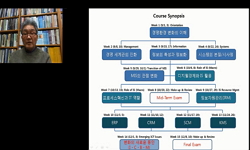This research aims to study revitalization strategies of rustbelt cities in North America and their implication for Korean traditional industrial cities which have underwent gradual economic decline in recent. For their regional economic innovation, o...
http://chineseinput.net/에서 pinyin(병음)방식으로 중국어를 변환할 수 있습니다.
변환된 중국어를 복사하여 사용하시면 됩니다.
- 中文 을 입력하시려면 zhongwen을 입력하시고 space를누르시면됩니다.
- 北京 을 입력하시려면 beijing을 입력하시고 space를 누르시면 됩니다.

지식경제시대 전통산업도시 부흥전략 연구 : 미국 러스트벨트 도시 사례를 중심으로 = Revitalization Strategy of a Traditional Industrial City in a Knowledge Economy: A Case Study of Rustbelt Cities in North America
한글로보기https://www.riss.kr/link?id=A107074424
- 저자
- 발행기관
- 학술지명
- 권호사항
-
발행연도
2020
-
작성언어
-
- 주제어
-
KDC
359
-
등재정보
KCI등재
-
자료형태
학술저널
- 발행기관 URL
-
수록면
95-121(27쪽)
- DOI식별코드
- 제공처
-
0
상세조회 -
0
다운로드
부가정보
다국어 초록 (Multilingual Abstract)
This research aims to study revitalization strategies of rustbelt cities in North America and their implication for Korean traditional industrial cities which have underwent gradual economic decline in recent. For their regional economic innovation, our case cities commonly invest in developing new industries for their future rather than assisting for competitiveness of their basic manufacturing. New industries include a medical service and life science industry, robot and ICT, green energy, financial business and cultural tourism, etc. A popular location of these new industries is a downtown area in a central city which millennial generation prefers to live. Under a smart growth policy, downtown areas with research universities and historic amenities have been rebuilt as innovation districts of high-tech industry and professional service. At the same time, inclusive growth policy assists economically distressed communities in a central with public aid and tax assistance exemptions for stimulating business enterprise and creating jobs. Abandoned housings and vacant lands have been purchased by local government for building open space or depositing them for future use. Rather than planning for population growth, our case cities restructure their space for smart shrinkage. At last, in planning and implementing their urban revitalization strategy, private organization and public-private collaborative agencies are more active than local government. In addition, a large portion of finances for their development came from both private investments and levy of local beneficiaries rather than pure public assistances from national and local government.
목차 (Table of Contents)
- 1. 서 론 2. 이론적 배경 및 선행연구 3. 사례도시 현황 및 특성 4. 사례도시별 부흥전략 및 추진체계 연구 5. 결 론 참고문헌
- 1. 서 론 2. 이론적 배경 및 선행연구 3. 사례도시 현황 및 특성 4. 사례도시별 부흥전략 및 추진체계 연구 5. 결 론 참고문헌
동일학술지(권/호) 다른 논문
-
서비스 공급 인구와 접근성에 기반한 도시기반시설의 입지결정에 관한 연구 : 공공도서관을 중심으로
- 한국지역개발학회
- 임수진(Yim, Soo-Jin)
- 2020
- KCI등재
-
- 한국지역개발학회
- 동진우(Dong, Jin-Woo)
- 2020
- KCI등재
-
관광기반형 장소마케팅의 정부 간 파트너십에 관한 연구 : 일본의 인바운드 관광정책을 사례로
- 한국지역개발학회
- 전소라(Jeon, So-Ra)
- 2020
- KCI등재
-
도시의 중심성과 연관성에 기초한 지역의 공간구조 설정방법 및 탐색적 적용에 관한 연구 : 충청권 적용 사례를 중심으로
- 한국지역개발학회
- 임병호(Lim, Byung-Ho)
- 2020
- KCI등재





 스콜라
스콜라


